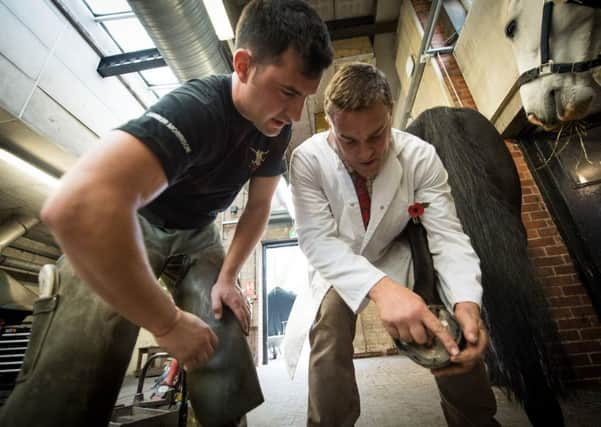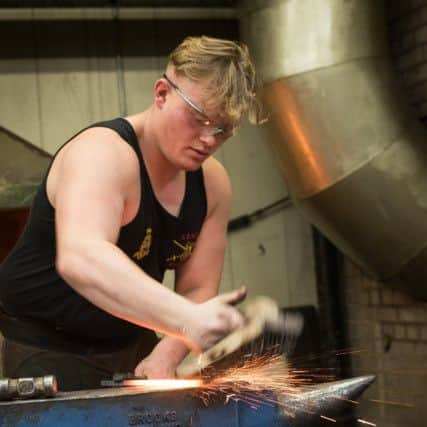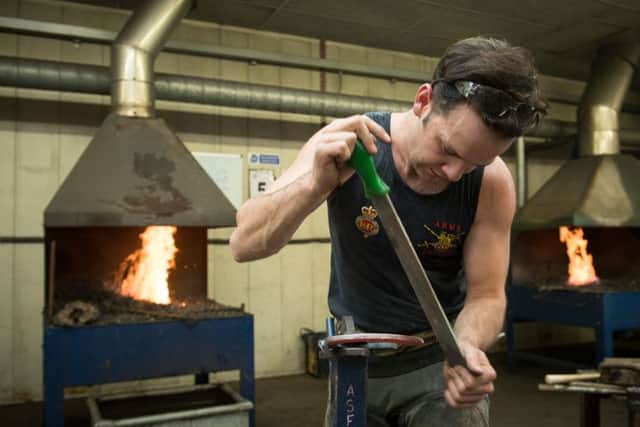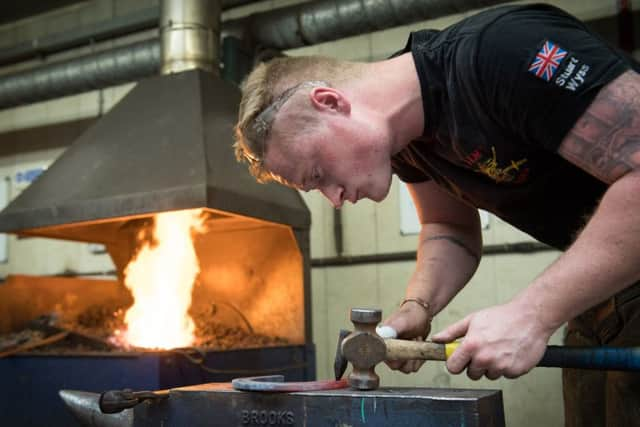Military and civilian farriers compete for national titles at Melton


The prestigious three-day event was held at the Army School of Farriery at the town’s Defence Animal Centre off Asfordby Road.
First to showcase their craft were the junior army apprentices, who are in their first or second year of training, with their challenge to make one front and one hind shoe from concave steel in 50 minutes.
Advertisement
Hide AdAdvertisement
Hide AdNext to enter the forge were the senior army apprentices, who had to produce two shoes, one from flat steel and one from concave steel.


Both classes were timed against the clock and were meticulously judged by Stephen Hill, from the Fellowship of the Worshipful Company of Farriers.
The third competition saw farriers, including ex-military ones, make, fit, and nail a three-quarter fullered fore shoe using flat bar steel in just 55 minutes.
One of the competitors, Apprentice Farrier Trooper Ben Moore said: “I’d never been near a horse before I joined the Army six and a half years ago.
Advertisement
Hide AdAdvertisement
Hide Ad“It was watching the horses getting shod that really made me want to become a farrier. I just found it interesting watching them work with steel.”


Lance Corporal Rhys Crimmins, who qualified as a farrier earlier this year and is based in London with the Household Cavalry Mounted Regiment, said: “When I was an apprentice I went to every competition I could because you can learn so much.
“You can talk to other farriers and learn what they would have done differently to you.
“You also get the feedback from the judge, good and bad.”
The competition carried on through the weekend when civilian farriers competed against military personnel, including farriers from the Household Cavalry and Kings Troop Royal Horse Artillery in the Open Hunter Class and Open Therapeutic Class.


Advertisement
Hide AdAdvertisement
Hide AdCompetition organiser and Army Farrrier WO2 Chris McCabe said: “It’s been a great competition with great examples of horseshoeing and shoemaking skills.”
The use of horse in the Army dates back to the First World War, when around one million horses were sent into combat.
“It takes three years of training to qualify, during which time the soldiers are taught the metal work skills needed to make and adapt a shoe to the shape of the horses’ hooves, and learn how to fit shoes safely. They also learn about horses’ anatomy and how to diagnose and treat common health problems.”
Today, farriers support the horses in their important ceremonial role as part of the Household Cavalry and the King’s Troop.